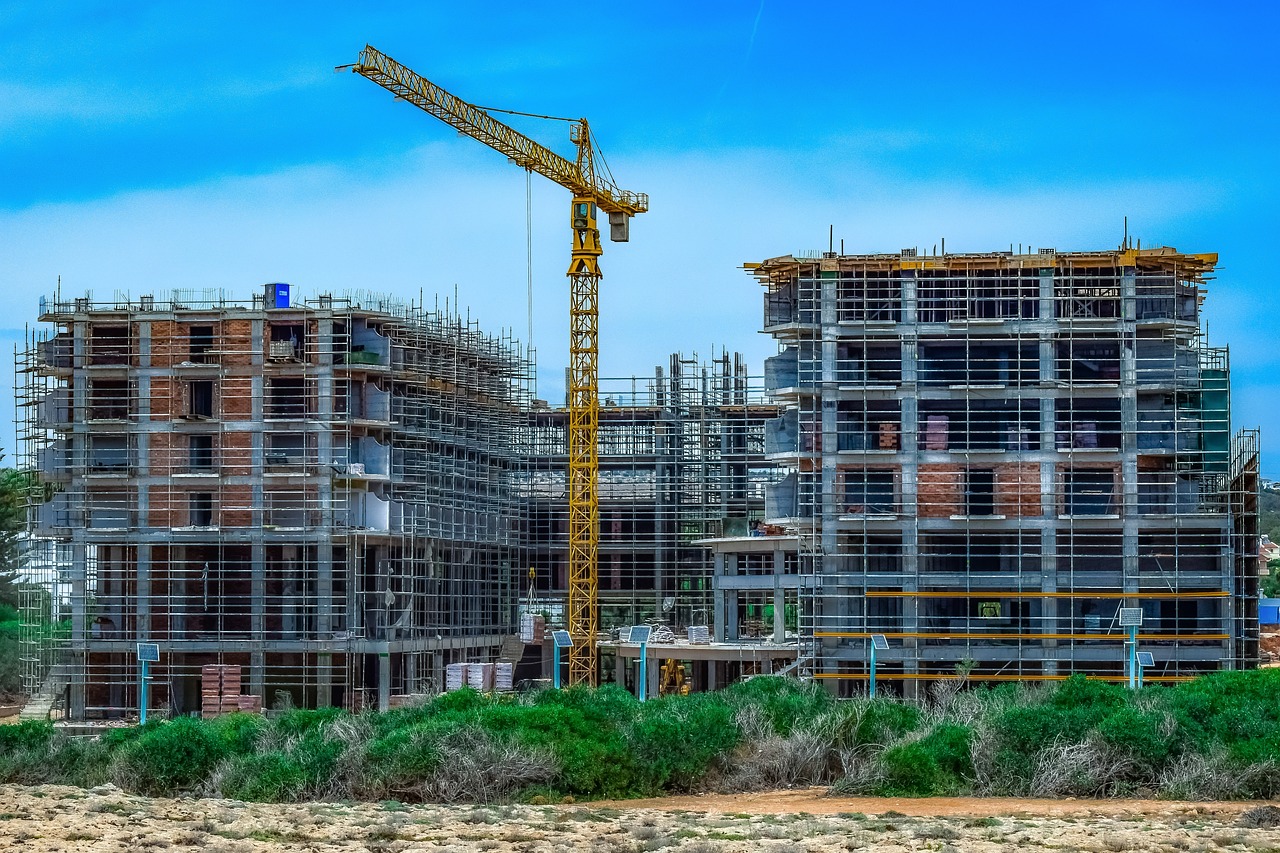Façades protect buildings from weathering and allow covering the wall with aesthetic taste.
Additionally, façades can be described as complex matrices that are exposed to multiple environmental factors, which directly increases the interest regarding microbial growth (1).
In some cases, microbial growth can be strong linked with biocorrosion, which not only causes visual damage and provide real damages (2). Moreover, visual problems cannot be disregarded, especially for façade render producers and law regulation of commercial guarantees in EU member states (3).
Not only environmental factors are included in project: “OMiBiB: Optimization and Reduction of Biocide Application in Construction Materials”. OMiBiB project is multidisciplinary and covers several research fields such as: Natural Sciences, Design Engineering, Electrical Engineering and Computer Science and involves joint work with industry partners. In the field of Applied Natural Sciences, the focus is mainly on the impact of biocides on the microbial community on facades. The overarching goal is to decrease the biocide approach and simultaneously prevent microbial growth on façades. To achieve this aim it is important to understand the dangers of biocides and how the microorganisms can survive in harsh conditions such as a biocide-containing façade.
Why is it necessary to decrease the biocide approach?
Biocides belong to chemical groups such as insecticides and pesticides and are used to control microbial growth various fields including:
– healthcare
– water and surface disinfection
– product preservation (4).
The uncontrolled use of biocides is increasing every year and poses several challenges (5). Biocides have a strong toxicological impact on aquatic and soil environments and are harmful for humans (6).
Furthermore, an overdose of biocides can create environment that promotes the development of
cross-resistance with antibiotics, especially in livestock production (7). Cross-resistance describes a phenomenon in which microorganisms can adapt not only to a higher concentration of a biocide, but also to a higher concentration of an antibiotic, and vice versa (8).
What happens if a microbe wants to acquire new habitats?
First option is often a mutation or multiplication of the gene responsible for resistance, and the number of mutations itself could be also involved (9). Mutations related to resistance are common in the gene coding region of efflux pump families such as: MF, MATE, RND, SMR and ABC known as multidrug-resistant systems (10). Typically, the most common case is overexpression of efflux pumps, which are able to pump out the toxins (10).
Second possibility is bacterial tolerance established from decreasing cell membrane permeability or development of biofilm. These mechanisms are already derived from the investigations of multiple drug-resistant pathogens (9).
Which Microorganisms are able to grow on the façade and which species should be considered?
There are already known several organisms that are mentioned as facade colonizers :
- Pseudomonas spp. – are aerobic bacteria that can degrade a biocide
- Alternaria alternata – is a fungus that is well known as a biological aeroallergen and an inducer of asthma.
- Aspergillus niger – is a fungus, that can decompose herbicides
- Klebsormidium spp. – are algae with the ability to grow in extremely cold environments (isolated at 3000 MSL – in the Alps)
- Chlorococcum spp. – are algae with a strong capability of biofilm formation and heavy-metals absorption (11).
Bacteria have the potential to live in harsh conditions without nutrients, using sulfur compounds NO2- or even biocide as substrate. On the other hand, façade-fungi harm human health and have the ability to decompose biocides. Lastly, algae possess various superpowers such as heavy metal absorption, or survive in cold environments. Despite their abilities, the commonality among these microorganisms is their ability to survive on a façade – new habitat.
It is necessary to prevent microbial growth that causes biocorrosion. The second aspect involves striking a balance between harmful microorganisms on façades and minimizing biocide use. Lastly, it is important to maintain communication with industry partners and work together to meet commercial warranty parameters. Establishing appropriate warranty parameters and finding best practices will allow for ecological and efficient maintenance of facades in the global construction industry, and in Poland.
References
1. Hofbauer et al. “Biocide Tolerance in Microorganisms with Respect to Durability of Building Coatings: 2th International Conference on Durability of Building Materials and Components.”. In:
2. Jia R, Unsal T, Xu D, Lekbach Y, Gu T. Microbiologically influenced corrosion and current mitigation strategies: A state of the art review. International Biodeterioration & Biodegradation (2019) 137:42–58. doi:10.1016/j.ibiod.2018.11.007
3. THE EUROPEAN PARLIAMENT AND THE COUNCIL OF THE EUROPEAN UNION. RECTIVE (EU) 2019/771 OF THE EUROPEAN PARLIAMENT AND OF THE COUNCIL of 20 May 2019 on certain aspects concerning contracts for the sale of goods, amending Regulation (EU) 2017/2394 and Directive 2009/22/EC, and repealing Directive 1999/44/EC (2019).
4. Maillard J-Y. Bacterial resistance to biocides in the healthcare environment: should it be of genuine concern? J Hosp Infect (2007) 65 Suppl 2:60–72. doi:10.1016/S0195-6701(07)60018-8
5. Radiant Insights Inc. Biocides Market Analysis, Size, Share, Industry Report 2022 (2022). https://www.radiantinsights.com/research/biocides-market (Accessed April 20, 2023).
6. Gilbert P, McBain AJ. Potential impact of increased use of biocides in consumer products on prevalence of antibiotic resistance. Clin Microbiol Rev (2003) 16:189–208. doi:10.1128/CMR.16.2.189-208.2003
7. Busch G, Kassas B, Palma MA, Risius A. Perceptions of antibiotic use in livestock farming in Germany, Italy and the United States. Livestock Science (2020) 241:104251. doi:10.1016/j.livsci.2020.104251
8. Gnanadhas DP, Marathe SA, Chakravortty D. Biocides–resistance, cross-resistance mechanisms and assessment. Expert Opin Investig Drugs (2013) 22:191–206. doi:10.1517/13543784.2013.748035
9. Maillard JY. Antimicrobial biocides in the healthcare environment: efficacy, usage, policies, and perceived problems. Ther Clin Risk Manag (2005).
10. Du D, Wang-Kan X, Neuberger A, van Veen HW, Pos KM, Piddock LJV, et al. Multidrug efflux pumps: structure, function and regulation. Nat Rev Microbiol (2018) 16:523–39. doi:10.1038/s41579-018-0048-6
11. Hofbauer WK, Gärtner G. Microbial life on Façades. Berlin, Heidelberg: Springer Berlin Heidelberg (2021). 327 p.
Michał Ciok


